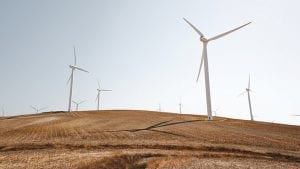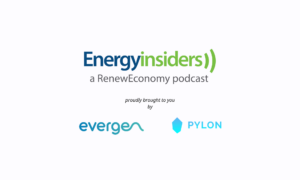Key Takeaways
- Contact Energy claims the rejection of its 300 MW wind farm proposal in South Island involved seven legal mistakes and plans to appeal.
- The Environmental Protection Authority panel rejected the proposal due to potential harm to wetlands and endangered species, as well as non-compliance with local planning rules.
- The New Zealand Wind Energy Association expressed disappointment over the decision, stating it delays the country's energy transition and renewable energy targets.
New Zealand gentailer Contact Energy is alleging the rejection of its 300 megawatt (MW) wind farm proposal in the South Island made seven legal mistakes, and is preparing to reapply for development approval this week.
An expert Environmental Protection Authority (EPA) panel rejected the Southland wind farm in mid-March, on the grounds that it may harm wetlands and several endangered species, and didn’t meet local planning rules.
The energy company issued a furious response and on Friday lodged an appeal in the High Court.
“We have reviewed, in detail, the recent decision by the consenting panel to decline our application,” said Contact CEO Mike Fuge in a statement after the decision.
“The panel’s decision is flawed, with significant legal errors identified. We will lodge an appeal with the High Court, outlining the specific areas of law where the decision is incorrect.”
The company will submit a new development application under a reformed fast-track process “in the next couple of days”, a Contact Energy spokesperson said today.
Contact was not the only one angered by the decision.
Assistant energy minister Shane Jones tartly remarked immediately after the decision that the country may as well start digging up coal again if it couldn’t approve what would be New Zealand’s biggest wind farm.
And the New Zealand Wind Energy Association (NZWEA) was “extremely disappointed” at the “missed opportunity”.
“While NZWEA respects the Panel’s decision, this simply delays Aotearoa’s energy transition at a time when urgent action is needed to meet our renewable energy targets and enhance our energy security,” the organisation said in a statement.
“To achieve the Government’s goal of doubling renewable energy by 2050, we must build 9 GW – 15 GW of additional renewable electricity capacity over the next 25 years. In stark contrast, only 2.9 GW was built over the last 25 years.”
The now-defunct fast-tracked process has also come under fire. The current national government dumped the three year-old COVID- era system in 2023 in favour of a new process that consolidates approvals processes and shifts final decision-making power from an expert panel to the relevant minister.
It also shifts approvals from governing how a development will interact with the environment to how it will suit the national interest.
“Labour’s COVID 19 Fast-track legislation only dealt with consents under the RMA [Resource Management Act environment law ], meaning any other approvals still had to be applied for separately,” said the government minister in charge of the reforms, Chris Bishop, in comments emailed to Renew Economy.
“The purpose of the FTAA is to support infrastructure and development projects with significant regional or national benefits,” he said. “Expert panels must give greater weighting to the purpose of the FTAA.”
He said it would speed up the time it takes for development approvals for major projects including for renewables.
Heading to court
The Southland wind farm was one of the last projects heard under a now-defunct fast-track process, which was replaced after 2023 with a new fast-track system by the new government.
The expert panel’s decision was weighted towards views by several independent ecology experts who said there was not enough data about the wetland areas where turbines would be sited, or the populations or habitats of nearby reptiles, birds and bats, to speculate on how it might impact them.
Contact Energy’s legal attack says the panel should have approved the wind farm because it fit within all local planning rules, and its environmental mitigation plan was modelled to achieve at least a no-net-loss of biodiversity over its lifetime.
The wind farm proposal earmarked three of the 7MW turbines for a corner of sheep and cattle station Glencoe and 18 in a pine forest owned by timber company Matariki.
But the majority, 34, would have been in an area called the Jedburgh Plateau, which contains ecologically important bogs and fens.
The 220m tip height, the largest in New Zealand, created concerns for bats and eastern falcons.
But a set of conditions proposed by Contact Energy in November last year and heavily annotated by those experts appear to have won them around to the project.
The wind farm would have shut down operations of eight turbines from sunset to sunrise between 15 February and 15 April each year if wind speeds, rainfall and temperatures met certain criteria, to protect bats.
It also proposed 200m exclusion zones around any eastern falcon, or kārearea, nests and 50m for nests of any threatened indigenous birds, and included ongoing pest control and monitoring payments during development and for the life of the wind farm.
The panel, however, found these conditions would amount to “unlawful” compensation for harm already done – a view also being appealed in the High Court challenge.
Contact Energy has so far spent $2.3 billion on geothermal plants, a solar farm and a big battery, but most of these are finished or close to. The $1 billion Southland wind farm was to be the company’s next big renewable project.








